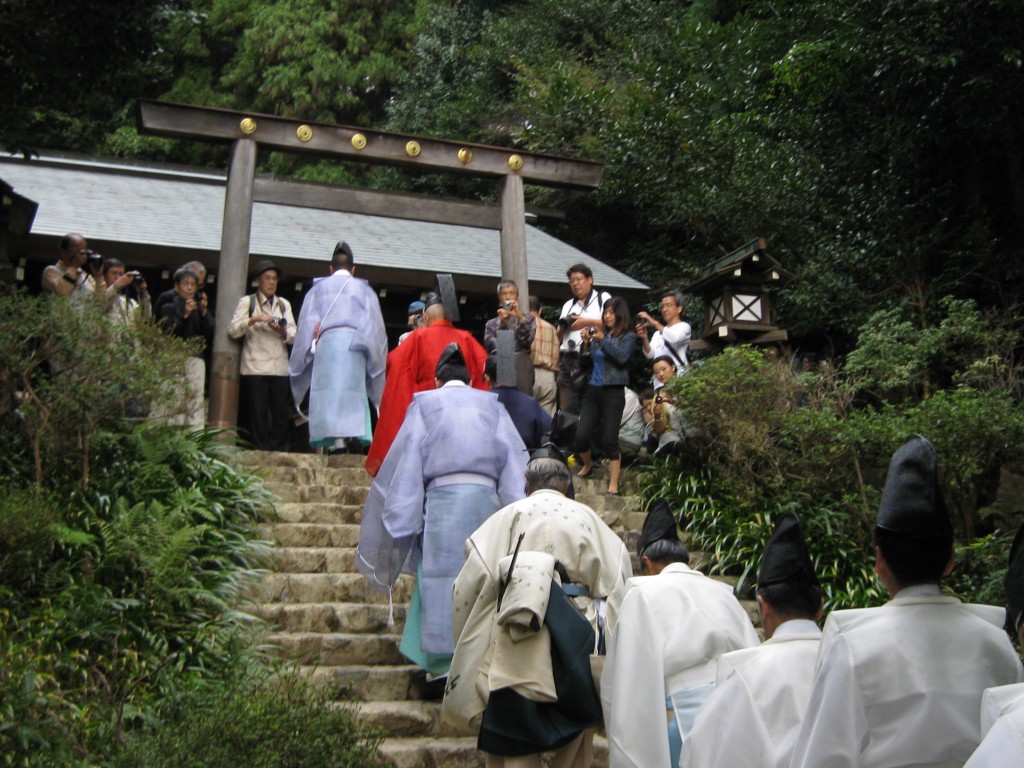
Procession of priests up to a waiting throng of photographers
Last weekend was the Kannamesai at Ise Jingu, often called its harvest festival. It’s their major event of the year, and I thought about going but found everything was booked. Then I heard that if you couldn’t visit Ise itself, you could visit “the Kyoto Ise” – Himukai Daijingu. It honours Amaterasu, is modelled on Ise architecture, and has a major festival to coincide with the Kannamesai. It’s even got an Inner Shrine (Naiku) and an Outer Shrine (Geku), just like the real thing, and there is a special ‘worship from afar’ spot directed towards Ise. Perfect! No need to travel at all…
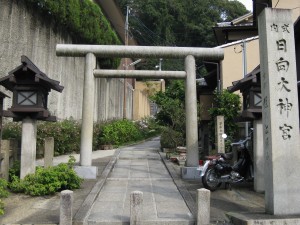
The inauspicious entrance to the shrine. Yet once you ascend the stairway, there are hills of wooded charm.
The Himukai rituals are spread over two days. The first day is for the Outer Shrine, the second for the Inner. I went on the second day, made a bit more special by the performance of a kagura sacred dance. There were nine ritualists in all (five of whom performed gagaku music) plus about 100 onlookers, including, I imagine, a fair few parishioners though photographers were dominant. These days Shinto’s a spectacle even for Japanese.
The purification rites took place in the courtyard area, before the formal procession up the steps to a clearing before the Inner Shrine. As well as the usual waving of a tamagushi, the purification involved a symbolic sprinkling of sacred water – which reminded me of Siberian shaman practice.
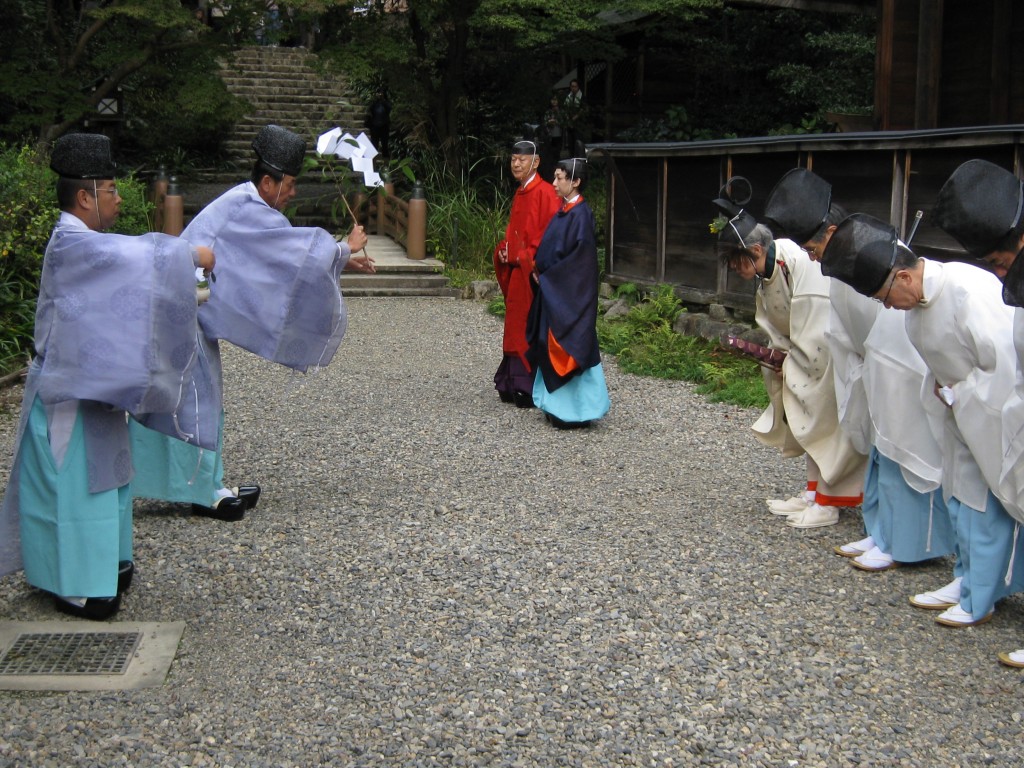
Head priest in red (guji) and daughter (gon-guji) line up to be purified by sakaki branch and water sprinkling, together with the gagaku musicians
At the start of the ritual the head priest entered the Naiku compound, from where three hauntingly long wails announced the kami oroshi (descent of the kami). During the rituals I couldn’t help but notice the different angles people struck when bowing in respect. A photographer near me bent over at a dramatic ninety-degree angle, perfectly executed, while others inclined slightly or simply lowered their heads. Even the priests struck different angles…
The sacred dance was by an elderly male, with steps and poses suggestive of Noh. It was the same nincho no mai dance as that performed at Ise, so my train fare was well saved. The performer had a sakaki branch with a white circular hoop attached to it – symbol of the sun, I wondered?
Afterwards we lined up to enter the inner compound and offer a sakaki branch (tamagushi). It felt a bit special, because entering the inner compound is very much off limits at Ise. Another bonus to staying in Kyoto.
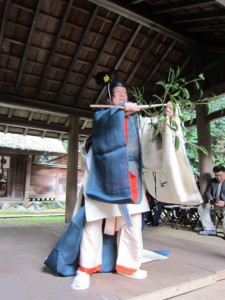
Kagura performer, facing the audience rather than the kami for a brief moment
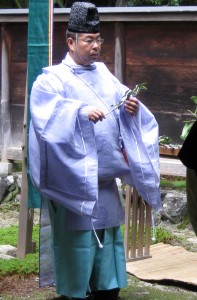
Priest handing out the sakaki offerings to us as we entered into the compound housing the kami
************************
Ancient rites
autumnal sunshine –
music for the gods
*************************
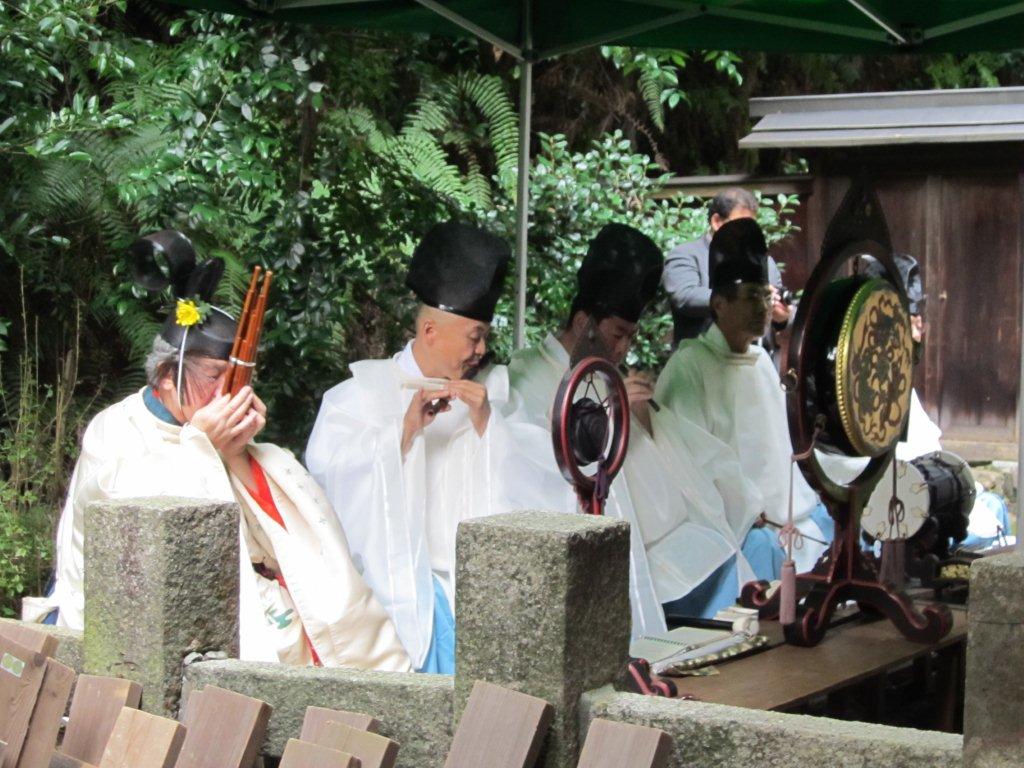
I got a chance later to speak with the guji, who claimed the shrine was founded 1500 years ago and was one of the oldest in the Kyoto basin. (The shrine brochure makes the extravagant assertion it’s the very oldest of all. According to legend, Amaterasu’s soul leapt here from Mt Takachiho during the reign of Emperor Kenzou in the fifth century. ) He also told me he’d never seen the goshintai (kami spirit-body), but presumed it was a mirror as at Ise. His daughter, who offered the omiki (sacred saké) to participants at the end, is going to take over the shrine in accord with the traditional hereditary principle (another shamanistic influence). The shrine was burnt in the Onin War, rebuilt in Edo times and became famous for road safety as it was near the Tokaido route to Edo (the shrine stands near Keage where horses were left when entering Kyoto). It was at this time too that it became known as a local substitute for Ise.
Finally I asked about the name of the shrine. Himukai, the head priest said, was named ‘Sun-facing’ because it was aligned towards the south, i.e. towards the sun. But why Daijingu, I persisted? Jngu is used for shrines with imperial connections while the ‘Dai’ suggests something big and important, though the far grander model on which it’s based is only known as Ise Jingu. By way of reply, the head priest gave a wry smile: ‘Wakarimasen,’ (I don’t know) he said with a shrug. Some things in Shinto are just meant to be a mystery!
A walk in the woods
The surrounds of Himukai are rather delightful. There are subshrines scattered around the hillside, one of which is for love connections (enmusubi). Instead of ema (votive tablets), you write your requests on small saucers. There’s also an Ise ‘worship from afar spot’ (youhaisho) marked by a torii facing towards the south-east.
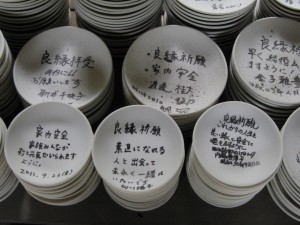
Requests at the enmusubi sub-shrine
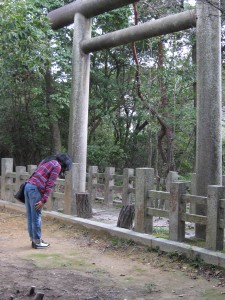
Worshipping Ise from afar
Like other places associated with Amaterasu, there’s a Heavenly Rock Cave in the surrounds. It’s the Shinto equivalent of the Lourdes grotto, which gets replicated at Catholic churches. Here there’s a disappointing passage between rocks, lacking any numinous quality at all though it’s listed among the trendy ‘Power Spots’ of Kyoto. Far better is the walk through the woods to the Zen temple of Nanzenji, where the blessings of nature are readily apparent in the verdant surrounds. It’s a charming part of Kyoto. I shall make a pilgrimage to this ‘little Ise’ more often in future…
****************************
Thinking of Basho
One foot after another:
Listen! The crickets…
****************************
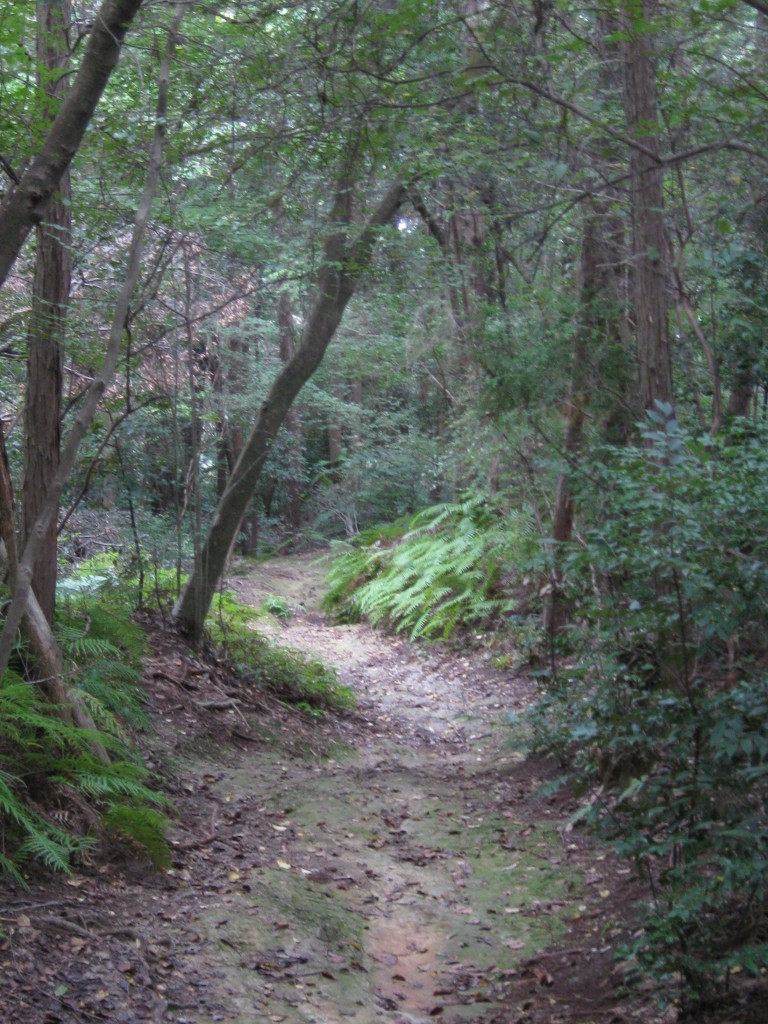
The wordless way connecting Shinto and Zen

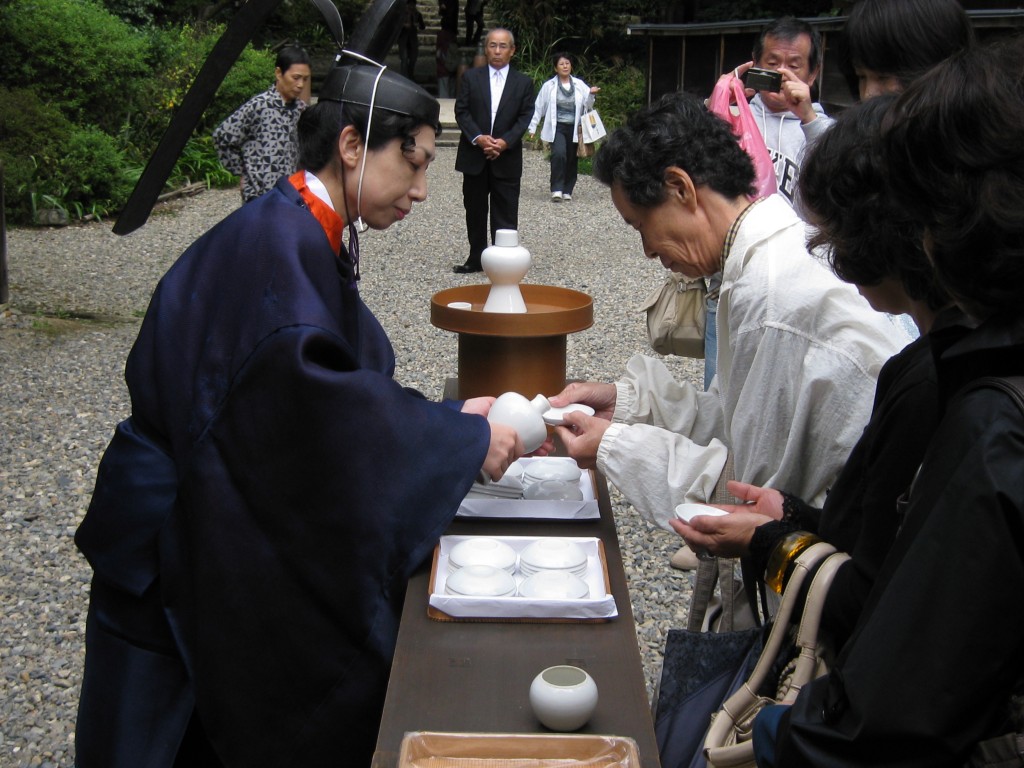
I went up there today as I love walking the Kyoto trail, and recognized the Ise shrine models with a surprise and thanks to your post , i got the answer.
I also took the lovely trail to Nanzenji on this crispy day after the rain
Excellent, Izhar, glad you got to enjoy some of our favourite walks on the Kyoto fringe…
I stumbled upon this shrine in 2005 when at the outskirts of Kyoto I noticed a path and took it! So glad I did! Though not as well kept as some shrines and temples, this one felt so special. I’ll return next time. Very much enjoyed your story and information. Thank you! -John
Thank you… I’m very glad to hear you enjoyed the shrine, it has some special features and is surprisingly large with a rich past. One of Kyoto’s best-kept secrets, indeed.